|
|
|
|
©Copyright NSWGR Trikes 2016 |
|
Trikes and Trolleys A short history of track vehicles on the NSWGR
by Greg Lee |
|
Chapter 1 Trikes in Trolley Sheds
You may perhaps have heard mention was made of a "Fairmont Trike". At first glance this would appear to be an anomalous term, because Fairmont’s have four wheels, and trikes have three wheels, don't they? Well, as some readers may be aware, all vehicles such as Fairmonts are loosely called "trikes", in N.S.W., at least. But wait now, aren't the sheds they are housed in called "trolley sheds"? Trikes in trolley shed; is there any sense to this?
The earliest known conveyances used by fettlers in N.S.W. were called Flat Top Trolleys. See Fig. 1. They consisted of a simple wooden frame, with cast iron "friction” axle boxes, which sat upon two wheel sets. They were used to carry tools and materials. Some could be fitted with "hungry boards", for carrying ballast. They had crank pins protruding from their wheels, and on the level and on moderate grades the fettlers propelled them by pumping the crank pins up and down with hand held rods, whilst standing up. On steep grades the fettlers would get off and push. For braking when descending grades, a simple wooden handle was provided, which simply rubbed on one of the wheels. A larger version of the flat top trolley, called the platelayers’ trolley, or dreadnought, was used for track laying and rerailing they were about 15' long, and were used to carry 40' rails.
In the days when flat top trolleys were common, the N.S.W. Government Railways were frugal indeed. Nothing was wasted. To house the flat top trolleys, rudimentary shelters were constructed from old sleepers. See Fig. 2. Since these sheds housed flat top trolleys, they were called, naturally enough, "trolley sheds". One of these sheds survives at Megan, and there is the remains of one at Timber Top. Trolley sheds have changed in size and construction over the years, the 52 Gang trolley shed at Glenreagh (see Fig. 3) being of modern (c1945) design. However the name has remained the same.
Two other types of manually propelled vehicles appeared some time last century. They were the Sheffield Trolley, and the Manual Tricycle. See Figs. 4, 5 & 6. Both were built by the railways at Goulburn per Way Workshops, and Newcastle per Way Workshops (Civic). They were modern compared to flat top trolleys in that they had ball bearing axle boxes, and geared drive.
Sheffields were operated by 3 to 10 men, pumping the central handle up and down, using their arms. Manual Tricycles were of two types; single pull and double pull. The former carried one man, and the latter two. They were operated by pumping the central handle backwards and forwards, using the arms, and they also had foot pedals attached to the bottom of the handle for leg action. Single pull tricycles were supplied to many fettlers, and were the most common type of fettlers' transport ever used on the N.S.W.G.R. In order to carry their tools, the fettlers placed a piece of chicken wire between the outrigger and the body of the vehicle, which served as a sort of net, upon which the tools were placed. Some of the single pull tricycles were converted for the use of signalmen. They had lamp racks fitted in which to carry kerosene "7 day lamps". The signalmen would use the trikes to travel to their signals when "doing the lamps".
In about 1910, the first motor tricycles appeared as fettlers' transport. See Fig. 7. Prior to this a few motor vehicles were in use on the system, but only by District Superintendents, Maintenance Engineers, and other VIPs. Motor tricycles were generally first introduced on steeply graded sections, where manually propelled vehicles made for slow going, and so decreased the fettlers' production in their track maintenance work. (They were probably not used on the Dorrigo line however, since by 1924 when the Dorrigo line opened, 4-wheel "Quadricycles" had been introduced. See p28 of Malcolm Paull's book The Glenreagh to Dorrigo Branch Railway). Motor tricycles were powered by a Villiers 2-stroke petrol engine, with direct belt drive onto the front wheel. The only means to start these machines was to push them, since they had no clutch, the idea being to jump on once the engine fired. As can be imagined, these tricycles "got away" if the fettlers weren't quick enough jumping on. Thus the procedure was adopted of priming the carburettor, and then turning the petrol off, before push starting. Then if a tricycle "got away", the fettlers would chase it, knowing that it wouldn't go far before running out of fuel. For this reason, the motor tricycles were nicknamed Chase-Me-Charlies by the fettlers.
By about 1920, by far the most common vehicles in use by fettlers in N.S.W. were the single pull tricycle, and the motor tricycle. Both were referred to as trikes. Although all vehicles later introduced had four wheels, the term "trike" was by then so entrenched, that the four-wheelers came to be known as trikes also. Thus even in the 1990s on the S.R.A. one could find “trike mechanics" and hear of people "triking" through a section, even though all of the vehicles referred to have four wheels. The term "trike" is a colloquial expression, and is not used in official publications, but it is used almost universally just about everywhere else. Note however, that the (relatively) recently introduced "Hyrail" road-rail vehicles are not referred to as trikes. Oh, and yes, trikes are housed in trolley sheds.
ACKNOWLEDGMENTS Jack Burraston, Murrurundi. Errol Hall, Tregeagle. (Lismore.) Alan Robinson, Bathurst. Stan Souter, Mittagong. Eddie Tracey, Glenreagh. Fred Weller, Glenreagh.
Figure 1. Flat Top Trolley. Figure 2. Megan Trolley Shed.
Figure 3. Glenreagh Trolley Shed.
Figure 4. Sheffield Trolley. Figure 5. Single Pull Tricycle.
Figure 6. Double Pull Tricycle. Figure 7. Motor Tricycle.
© Greg Lee, 1992 - 1999 |
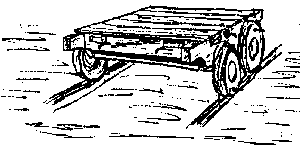
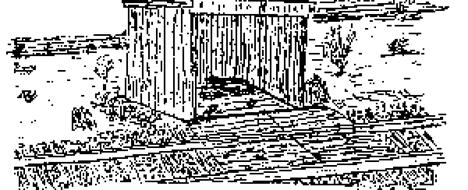

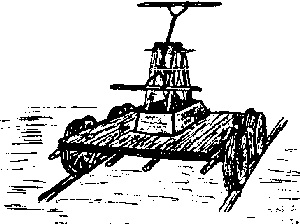
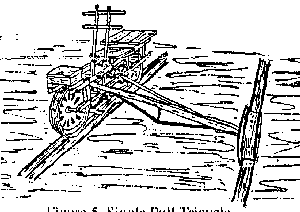
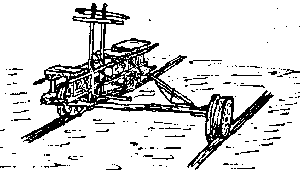
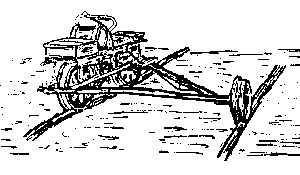

|
Preservation and Restoration of NSW Railway Track Vehicles |
|
NSWGR Trikes |
